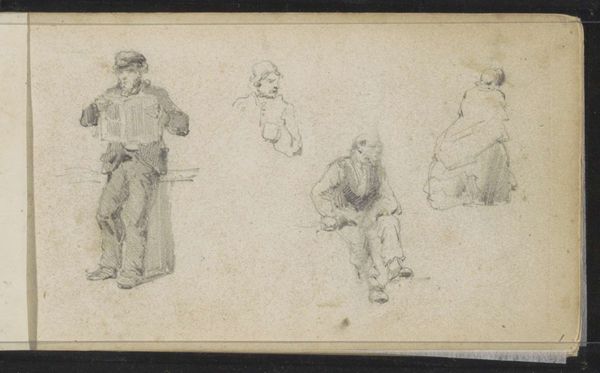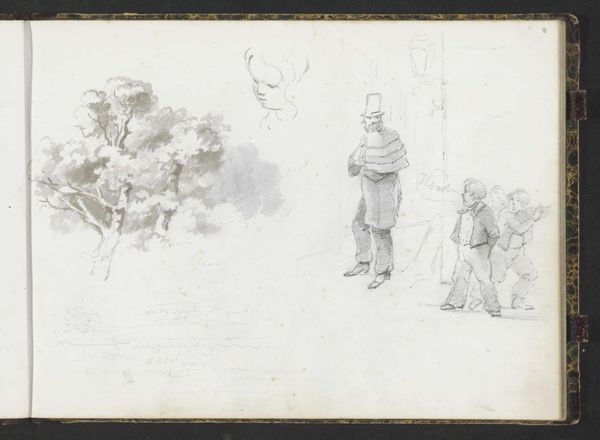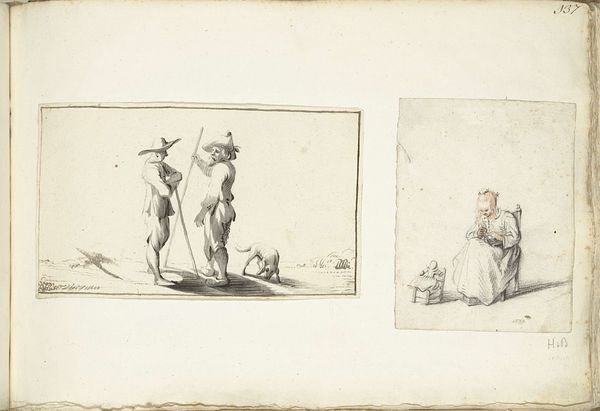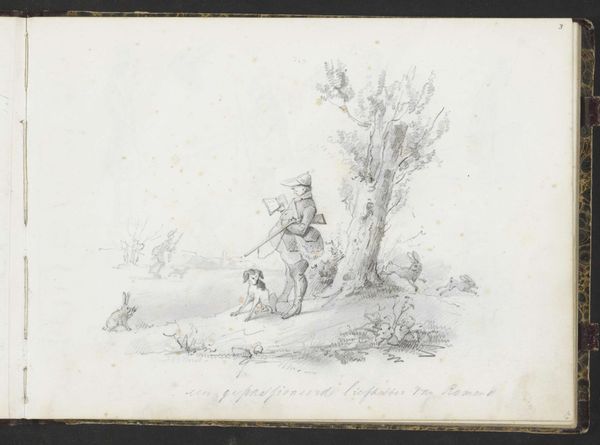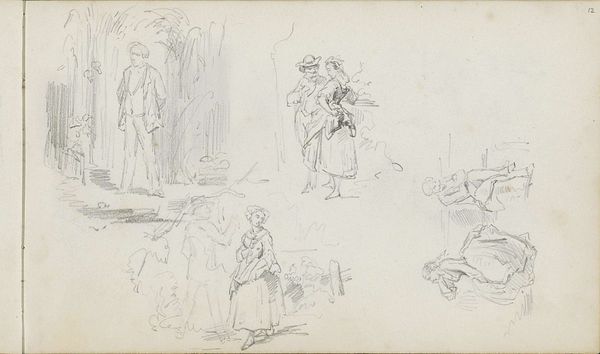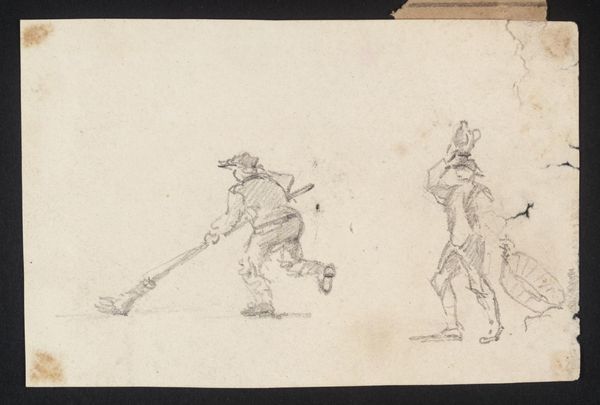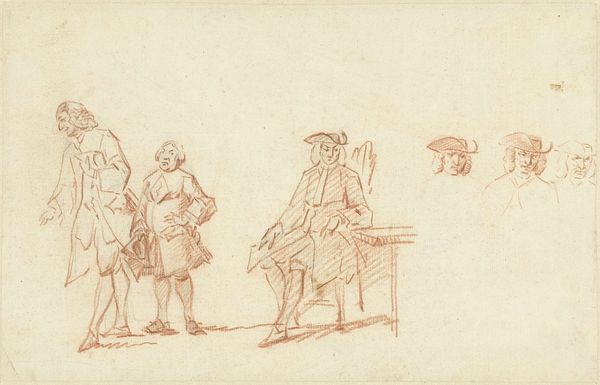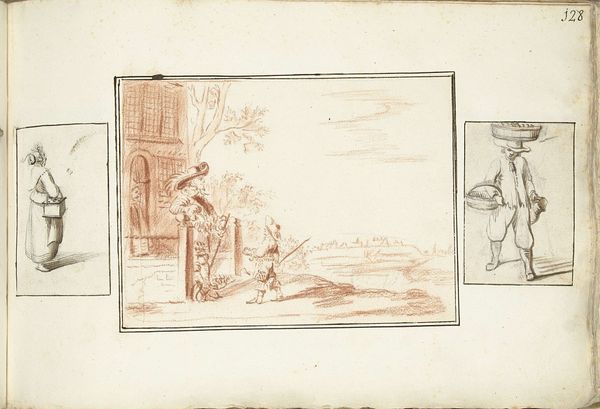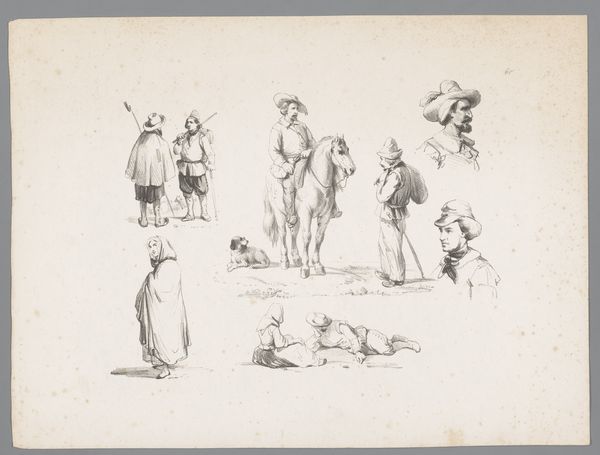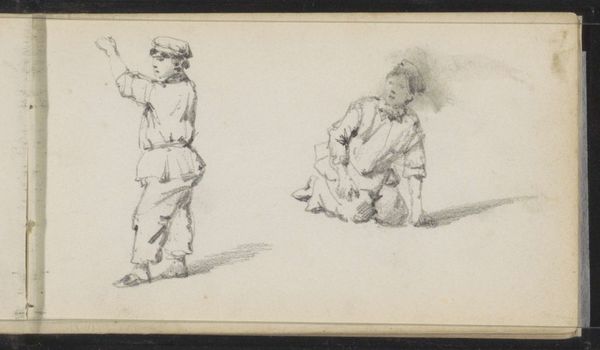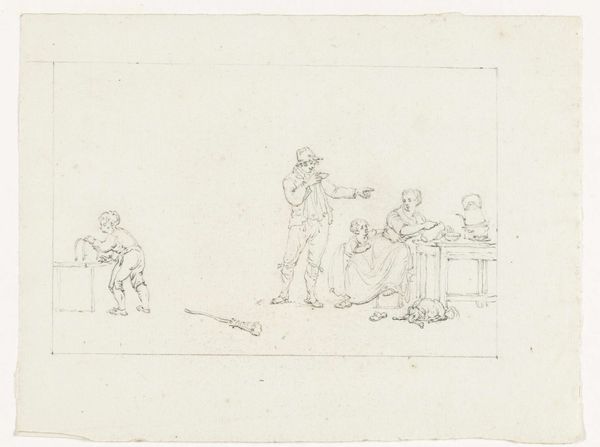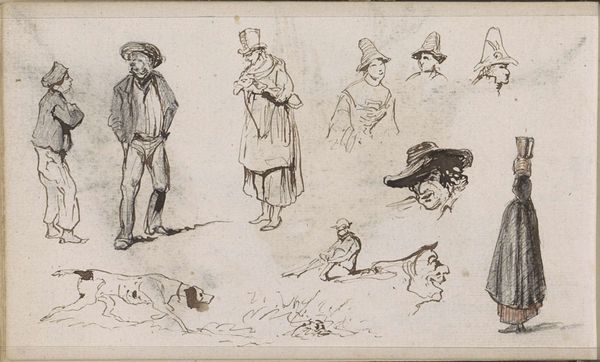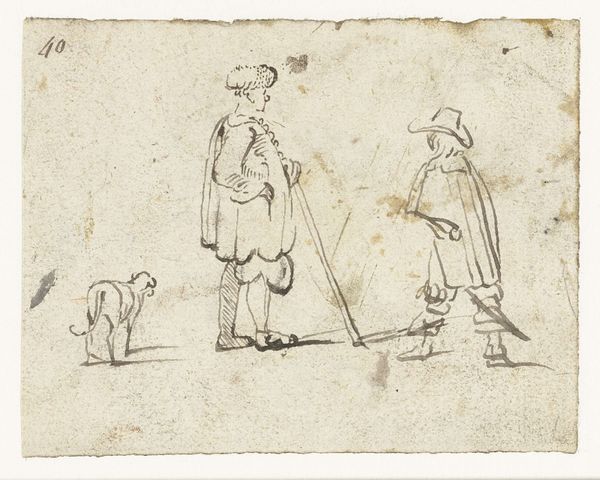
Boerderij, boeren en een hond naar Franse lithografieën 1843 - 1857
0:00
0:00
johannestavenraat
Rijksmuseum
drawing, pencil
#
drawing
#
dog
#
landscape
#
figuration
#
coloured pencil
#
pencil
#
genre-painting
Copyright: Rijks Museum: Open Domain
Editor: So, this is "Boerderij, boeren en een hond naar Franse lithografieën," or "Farm, Farmers and a Dog after French Lithographs," made by Johannes Tavenraat sometime between 1843 and 1857. It's a drawing, pencil and coloured pencil, from the Rijksmuseum's collection. It feels like looking into someone's sketchbook – a casual, yet intimate glimpse of 19th-century rural life. What catches your eye in this piece? Curator: The eye is drawn to the tableau of everyday life. See how Tavenraat positions the figures? The walking man, the two children in conversation, the dog, each a distinct character, each contributing to a narrative. These seemingly simple forms become potent carriers of meaning. Note, too, the presence of the humble farm – a recurrent image for rural virtue. Do you find a correspondence between the figures’ stance and their possible relationship to the farm? Editor: I hadn't really considered that. The farmer with the walking stick and bag is perhaps passing through. And it does feel like everyone else populates this farm or homestead. It feels like such a slice of life. What's with that writing on the lower right corner, some sort of dedication? Curator: Possibly. The script is nearly illegible. That the text imitates lithography could imply reverence for the then novel print-making process, yes. These rural genre scenes frequently symbolized an idealized vision of a pre-industrial past, carrying an emotional weight of nostalgia as urban life accelerated. Are there elements of the composition or style that enhance the emotional appeal? Editor: The use of pencil definitely gives it a softer, almost dreamlike quality. Curator: Precisely. Tavenraat, in adopting these archetypal figures and using these stylistic choices, subtly reminds us of collective memories and cultural continuity. The artwork transcends mere representation; it becomes a vessel carrying our shared past into the present. Editor: That's a great point. Now I see this drawing as much more than just a quick sketch; it's a reflection of cultural values and a way of preserving a specific vision of rural life. Curator: Indeed. It has invited us to contemplate our relationship to the past.
Comments
No comments
Be the first to comment and join the conversation on the ultimate creative platform.
